In the context of changes in marketing, communications, services, and consumers, what are the changing trends of advertisers' media strategies? How do agencies and media think about this change in advertisers?
From May to August 2016, the magazine interviewed 20 mainstream advertisers, advertising agencies and media at home and abroad. Through in-depth interviews, I hope to observe new trends in advertisers' selection of marketing media, media communication goals, media distribution methods, media budget allocation, and verification of media communication effects.
First, the market environment
Under economic pressure, marketing costs shrink
Judging from the macroeconomic trends, the national economy has shown a trend of sustained rapid rises and gradually turning to volatility.
â—‹ In terms of consumption, residents' income dropped slightly, and consumer spending was weaker year-on-year.
â—‹ At the industry level, a number of advertisers have experienced turbulence, especially fast-moving consumer goods. Both performance and profit have fallen. At the same time, facing the crisis of industrial upgrading, product upgrading and transformation, advertisers are also facing greater pressure in their overall operations.
According to the “Special Report on Advertisers in China's Advertising Markets for Ecological Surveys 2016â€, the proportion of advertisers’ marketing and promotion costs to corporate sales in 2016 continued to decline on the basis of the low trend since 2012. 8%.
In the face of operating pressure, shrinking product lines and marketing costs have become the first choice for advertisers.

(Procter & Gamble cut its agency fees and production costs by US$500 million, cutting down more than 200 of its sub-products to 65, while reducing the number of agents by nearly 50%. Advertisers such as Unilever, L'Oreal, Visa, and Johnson & Johnson also Are planning to cut agency fees.)
Consumer mobilization and fragmentation increase the difficulty of obtaining customers
There is also an important background here, that is, changes in the consumer. In short, consumers have been mobile, fragmented, and advertising.
The forms of new media media carriers, information dissemination methods, and content production models are also rapidly increasing in the fission, and the media environment and consumer environment are increasingly complex. This is especially true with the mobile internet.
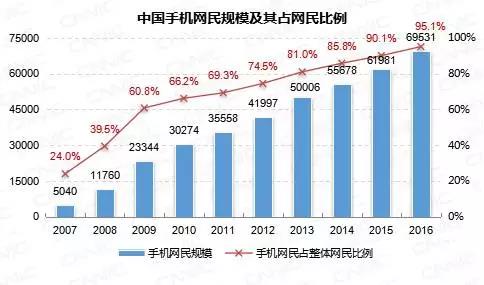
(CNNIC data shows that as of December 2016, the number of mobile Internet users in China has reached 695 million people. The iPhone has been in existence for 10 years. This star product has sold about 1.2 billion so far, reshaping people's access to the media.)
The second is the fragmentation of attention.
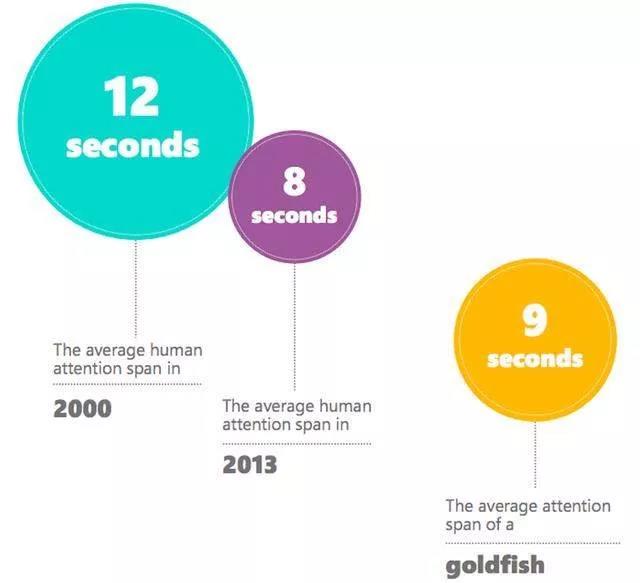
(The media is now decentralized. As of February 2017, the number of applications on the APP Store has exceeded 2.2 million, and the number of Android applications in Baozhong has reached more than 3 million. Consumers' attention has been reduced from 20 seconds to 5 seconds.)
The era of single-choice questions has passed. Marketing communication through a single media can no longer meet advertisers' marketing communication needs. Each media has its own audience and unique communication characteristics, but in the face of complex media environments, Which medium, what kind of content and carrier to choose, at what time, in what way, according to the current state of mind of the target object, to reach a problem that is quite a headache for advertisers.
In the face of more and more individualized consumers, advertisers have become more difficult to obtain customers in a more dispersed and superimposed environment.
Second, media preferences
50/50: The proportion of traditional media and new media budgets is quite similar
It is an undeniable trend that the focus of the advertising industry is accelerating toward digitalization: In 2016, digital advertising in the US market was spending US$72 billion, which exceeded TV advertising. In China, in 2015, China's Internet media advertising revenue exceeded the sum of traditional media advertising revenue.
However, although advertising marketing has entered the era of Digital First, this does not mean that the collapse of the traditional media scale advantage.

(In spite of the fact that the total number of traditional media is smaller than new media, the unit price is high, so the proportion of media cost budgeting is equal to the budget ratio of new media. The media has conducted research on 20 mainstream advertisers and advertising companies at home and abroad. Looking at the situation, advertisers have not yet seen an overwhelming advantage in the budget of new media than in the budget of traditional media. Instead, many interviewees believe that the influence of traditional media cannot be replaced. The more large-scale enterprises, the more Will not give up TV easily.)
At the same time, we also observed that many Internet brands and Internet platforms themselves are also promoting themselves through traditional media such as television and outdoor.
At an industry conference in 2016, Marcos de Quinto, Coca-Cola’s former global chief marketing officer, said that among all advertising channels, television media still provided the best return on investment.
A set of data he showed at that time showed that since 2014, Coca-Cola has received $2.13 in returns for every dollar spent on television, while digital media is only $1.26. The Wall Street Journal stated that since the end of 2015, P&G has increased the spending on television advertising.
Although in March 2017, adidas CEO Kasoer Torsted suddenly announced that Adidas was not ready to put on television advertising, but in June, Adidas publicly responded that "in China, Adidas will continue to use a variety of media channels to communicate with consumers, including Television. Television is still our main and very important media channel."
Sun Jingbo, head of the Adidas China Corporate Communications Department, said that the CEO is talking about a global strategy, but each market has different characteristics and different strategies for implementation. We will ensure that we continue to build our brand advantage and service consumers through traditional media channels such as television. â€
Digital advertising has many advantages, but when all advertisers are pouring into digital advertising, high-quality digital advertising is not that beautiful for advertisers. Although share changes, outdoor advertising, paper advertising, audio advertising, or television advertising all have their own unique effects.
In the survey, we found that the advertiser’s media strategy does not deny the value of traditional media on the one hand, but on the other hand it shows that the trust of new media is decreasing.
As one of the most active explorers in the marketing era, P&G focused on digital advertising as early as 2012. At that time, P & G global CEO said: "New media emerge in an endless stream, there are more diverse advertising channels in this area." Since then, P & G has also stepped up its marketing in the new media.
However, this year, Procter & Gamble made a bold attempt: it drastically cut $100 million in digital advertising budgets in the first quarter, but found that: has no effect on performance. In the first five months of this year, the number of websites that P&G put out advertising has shrunk from 1,459 to 978. On June 30 this year, Procter & Gamble and Audience Science, a seven-year-old digital advertising programmatic buying company, announced the suspension of contract renewal after the contract expired. P & G's top executives also publicly expressed their doubts about the precise delivery of digital advertising.
Outdoors, big screen: advertisers tend to increase the two types of carriers

It is worth mentioning that advertisers' preference for outdoor and large screens is increasing in the selection of numerous media carriers.
As a major outdoor media operator, Focus Media's 2016 profit reached 5.317 billion yuan, an increase of 57%. Former Chief Executive Officer of South China China and President of Katie China, current senior media expert Liu Zhiyan, the current 21 City Chief Consultant, disclosed that the current market share of outdoor media in China is about 8.5%, while outdoor media is in the general market in Europe and America. The share is 5-6%. The slowdown in traditional media growth and the continued growth of outdoor media are not simple.
Many of the interviewed advertisers stated that they must invest outdoors when formulating media strategies. The CPM of outdoor media is high, especially key channels and necessary paths, as well as high-density and high-frequency secondary exposure scenarios such as elevators and light boxes. Nice effect.
And more worth mentioning is the big screen. Whether it is the digital television of the traditional TV industry relying on the cable network or the IPTV of the telecom operators, it laid the foundation for the network and content of the early big screen ecology, and at the same time, it also promoted the entrance of home information entertainment and the content ecology of the large screen. The first round of popularity.
Then there is a transitional key product, the Internet TV box. This cheap and practical external device allows TV users to experience the boundaries of Internet TV for the first time, and also promotes the standardization and innovation of Internet TV content.
In the most recent year, Internet TV loaded with operating systems entered the market in an all-round way. At present, the number of Internet TV terminal equipment is more than 200 million, covering 36% of Chinese households. TV is no longer the product of a closed system. With the popularity of digital television, IPTV, and Internet TV, it regains the title of "home entertainment entrance." What follows is the revenue from advertising and the revenue from content.
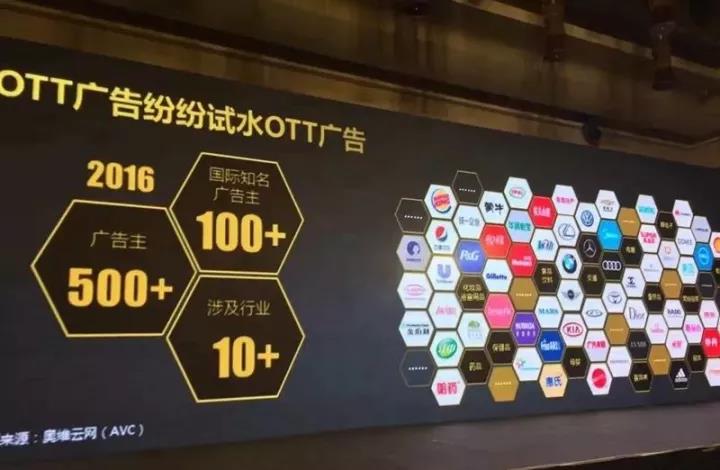
(According to Ove Cloud Network statistics, in 2016, the size of the OTT advertising market was approximately 970 million yuan, and the start-up advertising was still the bulk of the total, reaching 510 million yuan. “Before talking about the business model, we are talking about it. Year.†An internet TV operator introduced. TV advertisements on Tencent’s TV screen have changed from a 15-second advertisement in the first quarter of 2016 to three stickers.)
From an advertiser's point of view, one obvious feeling is that advertisers' enthusiasm for the big screen is rapidly heating up. Fast-moving consumer products including Procter & Gamble, Mengniu, Unilever, and KFC provided an advertising budget for Daping. Many advertisers also admitted that before the launch of the big screen is relatively small, after all, the scale of the user has not yet fully rise, but this year's big screen inflection point has emerged, the big screen will become an important factor in the separation of traditional television advertising budget.
In the advertiser’s big screen strategy, there is another trend that has emerged in the United States: it is the programmatic purchase of television advertising.

(Advertising management software vendor Wide Orbit also launched the “Programmatic TV Insight Survey†report, which showed that 73% of media buyers planned to increase the cost of programmatic TV advertising in 2017. In March this year, Fox announced that they have jointly created The audience positioning platform OpenAP simplifies the purchase process of TV advertisements, which is beneficial for advertisers to use their own data to target advertisements.)
Third, the media strategy
Content strategy: content delivery and content native capabilities
In the face of increasingly fragmented user media exposure and consumer behavior, advertisers’ media strategies, in addition to the selection of media carriers, also need to consider how to use attractive content and IP to demonstrate product tonality and features, and to use Scenarios and methods of use, establishing more emotional connections with consumers and amplifying the effectiveness of marketing communications.
The content strategy first focuses on the introduction of television programs and television content.
The relevant person in charge of Guangdong Provincial Guang told the author: “In all the television budget data we voted, 60%-70% of the budget is combined or associated with IP. Normally, the customer’s needs are followed by IP. of."
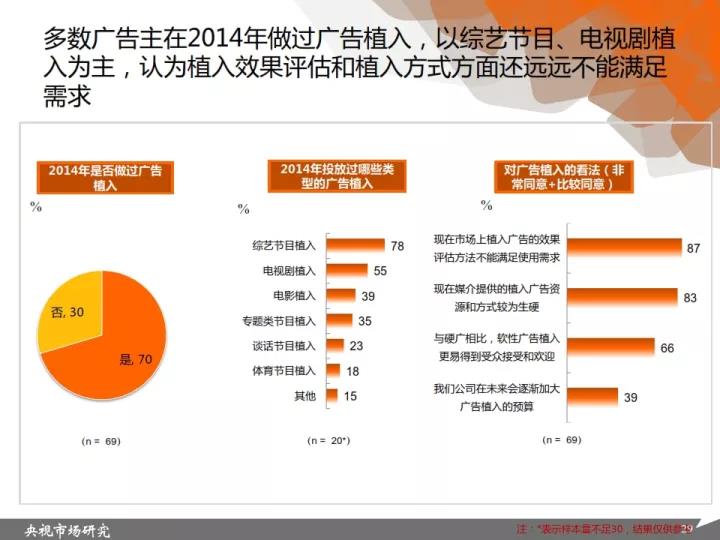
(CTR has shown advertisers attach great importance to content marketing in the three consecutive years of advertisers' marketing trends survey, and is also constantly adjusting the proportion of content marketing budgets. The 2015 Advertiser Advertising Marketing Survey Report released by CTR shows: In the main, 70% of the advertisers determined that they had implanted ads in 2014, mainly for the insertion of variety shows and the implantation of TV dramas.)
Relative to television content, nets and net plays are known for their flexibility and innovation. Coupled with this type of content is mostly concentrated in young people, so the network production of variety shows and network drama has become a contestable place for many advertisers in recent years. However, the number of net and net plays is huge, the level of production is uneven, and the contents of explosions are few, presenting a situation in which there is an icy world.

("Oh," "China's hip-hop", "I love the second element," and "The Mars Information Bureau" have attracted a large number of advertisers. In 2017, the cost of title bidding has broken 100 million. According to forecast, there are still About 40% of web content hasn’t been advertised by advertisers.)
The advertiser's third content strategy is through various types of independent IP on the social platform. Fashion beauty, healthy eating, emotional life, automotive technology, etc., KOL in various fields and different forms of content IP (text, pictures, videos, live broadcasts, etc.). The brand realizes the integration of content, implantation, and more entity operations and product development through cooperation with independent IP on various platforms.
The head of the Nestlé Water business unit in China also said that Nestlé currently uses the most regional KOLs, and from the perspective of the theme, it will mainly choose “KOL in vertical areas such as life, health or fashion that mothers pay attention to.†Car brands will also actively choose KOL, such as “running†and “maternal and childâ€, to collaborate.
In the process of marketing television, video, and social content, advertisers have also increased their ability to innovate in content marketing and their ability to interact with multiple platforms.
According to Creative Media, this form of marketing first appeared in online video programming, and now this form has also been adopted in popular TV programs and TV dramas in prime time.

(For example, the creative video of the Volcano Small Video App in Hunan TV's "Chinese Restaurant", the creative media of Nongfu Spring, Wu Taikang, etc. Has achieved good results.)
The creative big and medium insert puts forward higher requirements for the characters of the characters in the role setting, reduction of plot environment, and integration of product features. In foreign countries, advertisers have also made more upgrades in content marketing and interaction. In addition to large-scale television implants, they have also taken a look at social platforms other than TV platforms, and conducted social interactions around TV content.
In September 2016, Toyota replaced Nissan as the exclusive two-season car sponsor of NBC’s Voice of the Americas. At the same time, Toyota sponsored users to upload performance short films on Snapchat, and one of the performers was selected to perform on the stage. On social media, Toyota sponsored the "behind the sound" event, allowing users to vote on the next week's program and ask them questions.
Another manifestation of advertisers' general emphasis on content marketing is that large advertisers have established independent content creative teams.

(In 2016, Pepsi created a content creation studio named "Creator League". Coca-Cola set up "North American Social Center" and "Real-time News Editing Room". Unilever also invested in a digital advertising creative management platform Celtra. , to directly serve Unilever, participate in its global advertising creative production, management and distribution, as well as video, native advertising optimization and display.)
McDonald's also recently announced the creation of a creative content inhouse team. Terri Hickey, senior manager of McDonald's Worldwide Group Communications, said, “We are recruiting creative talents and expanding the power of tactical planning and dissemination teams.†McDonald's wrote in its description of the website job recruitment: “We are forming an internal team, it’s The mission is to deepen consumers’ understanding of the world’s highest-recognition brand.This new team will consist of a group of storytelling talents with creativity, innovation, and professionalism. Their main responsibilities are to teach wisdom from the McDonald’s brand. , concise, and sustainable brand story.†There is also an advertiser that must be mentioned is Disney Interactive.
According to Henderson, content director of Disney Interactive Media, we are positioning ourselves as a newsroom. Everyone has their own rhythm. They put forward a story idea, and we then studied whether we could find video producers, screenwriters, and animators. “Employees at the Disney Interactive “Newsroom†include creatives, marketers, editors, and data experts who create all possible content for Disney Interactive Media audiences.
Mark Walker, senior vice president and general manager of Disney Interactive Media, said: "Many people would not think that Disney has its own editorial department. This platform gives us the opportunity to embrace fans, approach fans, and bring them with them. High quality content.†At present, Disney executives not only trust the interactive media team, but also often ask them for ideas and strategies on how to reach fans.
Sales Strategy: Unity of Media Strategy and Product Sales
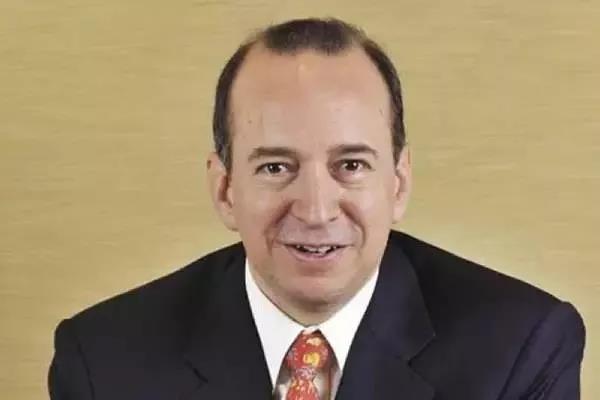
Chief Growth Officer Francisco Crespo
In May 2017, Coca-Cola announced that it will no longer be a CMO Chief Market Officer position. After the cancellation of the CMO, Coca-Cola set up a brand new position - Chief Growth Officer of Chief Growth Officer (CGO), and unified leadership in marketing, business leadership strategy, and customer service. CGO's position comes from Silicon Valley technology company, relying mainly on technology and data to promote user growth.
Coca-Cola is not the only fast-moving consumer goods company that has established CGO. Other fast-moving consumer goods companies have established CGO positions internally as early as five years ago, including companies such as Colgate, Coty, Kellogg, Hersey, and Everex International. Although some companies that established CGO did not cancel the CMO position, they also placed the CMO under the jurisdiction of CGO.
Regardless of whether or not to cancel the CMO position, a clear signal is that FMCG companies regard sales growth as a more critical factor than traditional marketing.
Not only is it fast moving but there are cars. In a typical traditional automotive media strategy, the attraction, acquisition, arrival, and purchase of potential customer resources (Leads) is the highest expectations of the entire marketing campaign. More and more auto manufacturers are keen to launch sales promotion ads, using the number of Leads as the KPI for media strategies.
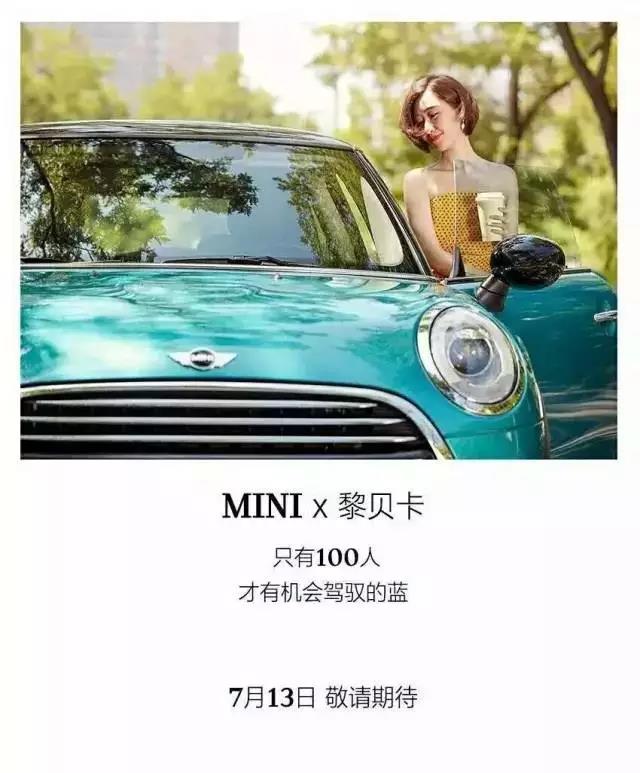
(At 9pm on July 21st, 2017, MINI China and fashion KOL Rebecca cooperated to launch the sale of 100 MINI limited models. In 4 minutes, 100 cars were quickly booked and within 50 minutes, all were paid. More people who failed to panic buy because they didn't shake the numbers expressed sadness in the commentary area.)
Everyone has two focuses on this battle:
First, KOL and the brand's content marketing could have played like this.
Second, KOL's "in-stock" strength is staggering.
Media strategies for the promotion of sales, also depends on the online and offline market diversion.
The first is fast-food brands such as food and beverages. In order to coordinate the distribution of products and sales of products in supermarkets of Shangchao, we must cooperate with Shangchao’s outdoor media to purchase and the geographically-based mobile-side targeted push. This media strategy on the one hand promotes target consumers to shop and purchase, on the other hand, it also becomes a bargaining chip between the brand and the channel provider, and obtains a better distribution stock.
In terms of e-commerce strategy, the distribution of stations inside and outside the station has not only been the choice of the Amoy brand, but also the budget for more e-commerce brands of the public brands.
Uniqlo is located in the retail industry. The number of customers in stores and e-commerce can be directly linked to advertising effectiveness, making it relatively easy to examine the effectiveness of campaigns and advertisements. So what they have to do is analyze the data after an advertising campaign to see if there are more customers coming to the shop to buy more.
Fourth, marketing concept
From the advertiser's point of view, after exploring the delivery strategies of such multimedia and content categories, what kind of improvement has formed in the media concept?
Data view
First of all, the concept of data is improved. Admittedly, advertising and communications themselves have been using data to measure the effectiveness of communications and to analyze market trends and consumer insights. However, advertisers never need data as often as today to complete the formulation and execution of marketing strategies.
For large overseas advertisers, data constitutes the starting point of all marketing strategies. Without data, there is no purchase. The awareness of domestic advertisers in this area has also begun to upgrade.
In our research, whether it is the quick elimination of decision-making or the decision-making automobile or financial industry, advertisers want to know that target consumers make feedback online or in other media environments. First of all, advertisers carry out normalization and special research projects on their own, using data as an important reference for verifying media distribution.
At the same time, advertisers will also adjust their own inherent data thinking. Instead of focusing on the pure traffic data and fan data, the media will be more transferred to share data, search data, and interactive data. Uniqlo's marketing team will also check the interaction rate of social platforms every week. Each week, it collects thousands of user responses on social platforms, separated by positive and negative reviews.
Secondly, advertisers build their own data platforms through self-collection, QR tracking, and multi-party cooperation to achieve a certain degree of online, offline, and cross-screen data access. This helps to obtain more accurate data and image data. Provide indispensable data support for the promotion of marketing decisions, products and services. Nongfu Spring, Yili, and Wong Lo Kat have built their own enterprise big data systems.
Third, the ability of advertisers to judge media data and performance data is also rising. There is a deeper understanding of the types of data already available, and it also poses more challenges to third-party data service providers' data products and services. Some experienced advertisers have been able to identify data leaks from data service providers' data reports.
With the increase in the concept of advertiser data, we also see the rise of another marketing force in the industry: consulting companies. Forrester's latest research found that 73% of marketers are willing to use consulting company's digital marketing services, of which 14% are very willing.
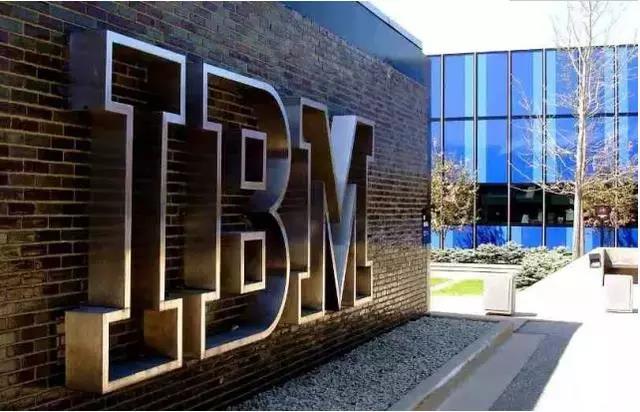
In 2017, the marketing and service subsidiaries of four Infocom Group entered the top ten of the large-scale agency companies selected by “Advertising Times†for the first time, close to WPP, Macronix, Publicis, IPG, and Dentsu. They are: Accenture Interactive, General C.W., IBM iX and Deloitte.

(Accenture Interactive is currently the world's sixth largest agency company. Senior manager Brian Whipple believes that brand marketing no longer begins with advertising, but rather with a comprehensive consumer experience.)
These consulting companies have introduced a large number of strategic and data analysis solutions to the chief marketing officer, and even laid out creative and content marketing, and combined multiple services into a unified platform, just like traditional agents, only to establish a firm foothold in the marketing community. What's more interesting is that advertisers’ attitudes toward consulting firms are very different from those of advertising agencies:
“Counseling companies do not take the channels of traditional agents, they will find CEOs to talk about business, and sometimes even directly through the board of directors. Once the agreement is reached, the consulting company emphasizes that they can save costs for large-scale restructuring of clients, and advertising agencies have more It is considered as a cost driver. In fact, the consulting company charges a much higher service fee than the agency company. In short, it is a different perspective on the issue, said Sarah Hofstetter, CEO of Digital Marketing Agent 360i of Dentsu.
Authenticity and safety
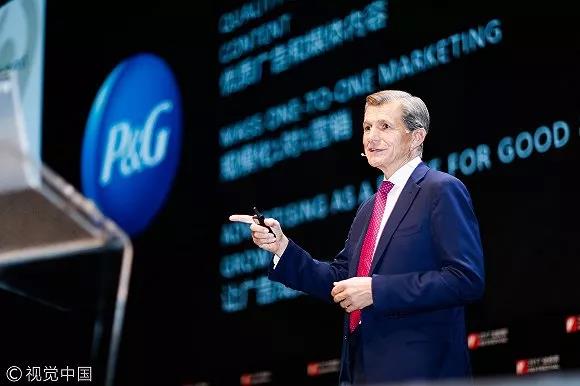
“In the past, we have been holding learning spirits to give new media opportunities, but over time we have seen a complex, opaque, inefficient and fraudulent media supply chain. We do not want to waste time on a bad media supply chain. And money.†Marc Pritchard, chief global marketing officer for Procter & Gamble, spoke on a number of public occasions this year about the issue of fake traffic in digital advertising marketing.
On August 25th this year, Xu Min, President of Media & Brand Operations and President of E-commerce at Procter & Gamble Greater China, listed several surprising figures at the MMA: According to ANA's 2017 report, 2017 is false. The amount of traffic losses in the world is about 6.5 billion U.S. dollars, and 9% of fake traffic on display ads on the PC side accounted for 22% of videos.
According to AdMaster's anti-fraud detection data, China's digital advertising market accounted for 30.2% of all invalid traffic in 2016.
"Our advertisements are seen by real people? Are our ads served on secure pages? Are our ads really seen by consumers?" P & G has raised three major problems in the industry, and there are also More and more big advertisers realize the seriousness of things.
In addition to authenticity, advertisers are also aware of the challenges of advertising media security. Security means that advertisements will not be placed on extreme websites such as violent pornography. It also means that advertisements and content will not be put on the industry's negative news page because the content of the page conflicts with the brand, negatively affecting the brand. .
For this topic, a person in charge of Adidas China recently publicly stated that adidas China has a very important brand task that is to establish itself as the best sports brand in China, so it cares for the consumer's experience with great care.
Among them, brand safety is a very important aspect. With the new platform frantically escalating, the entire market environment will become very complicated. How can we ensure that our brand delivers positive energy as a very healthy and positive brand and leads people to use sports to change their lives? How do I ensure that my experience can be passed on to my users very well? This is a very important topic.
So in fact, from the beginning of last year, the team from the global to China has been studying this issue, and is also analyzing with our partners and thinking about what to do next. Apart from making some technical distinctions and making some distinctions, the judgment on the content itself is the most complicated. For example, a car company does not want to catch up with a title like a car accident. But if it is a Japanese car company, is there more consideration. Therefore, the content selection and demand of each brand is not the same. â€
Crystal Clear Back Sticker,Phone Sticker,Mobile Phone Back Skin,Crystal Clear Phone Skin
Shenzhen Jianjiantong Technology Co., Ltd. , https://www.jjtscreenprotector.com